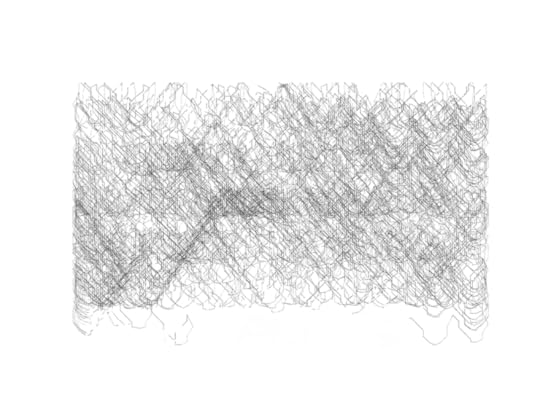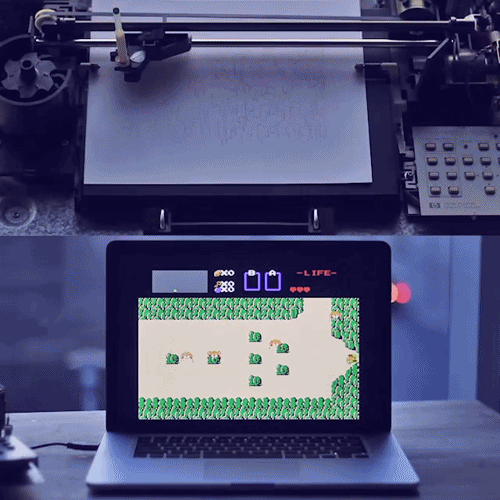Kill Screen Magazine's Blog, page 300
January 21, 2015
A game about dealing with problems by biting your fingers
Finally a good use for all those years spent gnawing the inside of your mouth.
Mayday! Deep Space relies on the panic in your mind
Years of watching space-horror come back to haunt you.
January 20, 2015
Government is strangely nonplussed when World of Warcraft gold is used for IRL drugs
Early in the morning of January 19, 2015, shoppers on bankofwow.com could buy 10,000 units of World of Warcraft gold for as little as $4.22. In addition to being traded within WoW, this virtual gold could theoretically be used to barter for (possibly illicit) physical goods or, as Bank of WoW proves, converted into American dollars. Thus, WoW gold is both a commodity and an actual currency.
WoW gold is not unique in this regard. Videogame currencies occupy a strange position; they are not widely thought of as real but can fulfill most of the roles of a currency both on- and off-line. The Department of the Treasury’s Financial Crime Enforcement Network (FINCEN) defines a virtual currency as “a medium of exchange that operates like a currency in some environments, but does not have all the attributes of real currency.” Virtual currencies such as Bitcoin or WoW gold are not accepted as legal tender but they can hold value and be converted into "real" currency.
In March, 2013, FINCEN updated its interpretive guidance regarding virtual currencies. The gist of the update was that individuals who worked as exchangers or money transmitters of virtual currencies would have to register transactions. Individuals who simply purchased goods with virtual currencies, on the other hand, were unaffected. As with most of FINCEN’s work, the goal of this regulation was to prevent money laundering.
When it comes to virtual currencies, the law makes few allowances for context or art.

Swiss artists !Mediengruppe Bitnik (Carmen Weisskopf and Domagoj Smoljo) recently learned this lesson the hard way. They created an online shopping bot and gave it a weekly budget of $100 in bitcoins to spend in a deepweb shop named Agora. The resulting purchases, some of which were illegal, were displayed in the Kunst Halle St. Gallen, were often illegal. On one occasion, !Mediengruppe Bitnik’s bot purchased 10 ecstasy pills. However, since the bot chose its purchases at random, the criminality of these transactions was difficult to assess. In a statement, the bot’s creators asked: “Who is liable, when a robot breaks the law on its own initiative?”
The question that made “The Darknet – From Memes to Onionland. An Exploration” so interesting was also its downfall. The day after the exhibit ended, !Mediengruppe Bitnik’s work was seized by the public prosecutor in St Gallen, ostensibly to prevent the drugs from ever resurfacing. “We believe that the confiscation is an unjustified intervention into freedom of art,” declared !Mediengruppe Bitnik.

The fate of !Mediengruppe Bitnik’s bot could easily be a story about videogames. As with bitcoins in “The Darknet – From Memes to Onionland. An Exploration,” videogame currencies are both works of art and practical tools. The existence of this artistic component, however, means little to regulatory authorities. That was the point of FINCEN’s 2013 interpretive guidance and the message the public prosecutor in St Gallen appears to have sent. If anything, the artistic abstractness of videogame currencies makes them more suspect; there is an elusive quality to currencies like WoW gold.
But these currencies are also very real. They are exchanged for objects that hold meaningful value on a regular basis. So long as these currencies hold some value, they can be exchanged for all sorts of things, some of which may be illicit. As !Mediengruppe Bitnik proved, commerce and art can coexist. However, when it comes to virtual currencies, art is not yet an excuse for commercial activities.
Images via !Mediengruppe Bitnik
January 16, 2015
Three music toys for when you're feeling drowsy
I used to call The Tiny Bang Story my "lullaby game" on account of its reliability in sending me to sleep at my desk in the late hours of the night. It's a gentle, soothing hidden object game with hand-painted artwork that you can complete in less than an hour.
I used to deliberately put it on while I was feeling dozy in order to put myself to sleep with a smile (I used to struggle to nod off and, sometimes, still do). Its soundtrack was the main culprit in this somnial ritual. Seriously, listen to this—it's music that's meant to be slept to.
its only graphics option is "drowsy."
Nowadays, I tend to read a book to put myself to sleep. Although, sometimes I have been known to vouch for the more traditional snoozing while watching a film in bed. That can be annoying, though, especially when you subconsciously listen to the same 30-second DVD menu singing to itself all night.
But, every now and then, I do come across a videogame that I'd classify as apt for putting myself to sleep with. Below are three of the more recent ones I've snuggled up next to. Perhaps you could try it out, too.
night tune (Pol Clarrisou)

We've all been there. It's late, you're on the road, and all you want to do is sleep. But you can't. You're still driving. Ugh.
Night tune is a game that wants to transport you to that irritating situation, but voluntarily, so that you can finally fulfill the fantasy of actually sleeping when you can't (without causing a car crash). This is why its only graphics option is "drowsy."
It places you in the passenger seat of a car. It's dark outside. Hazy city lights peer in at your half-closed eyes. When looking at the car's dashboard, a hand icon pops up, indicating that you can interact with the cassette player. Clicking it brings up your computer's files so that you can select your favorite music track.
Once the song starts playing, all you need to do to finish off this ceremony is to switch off the overhead light. Your head sways, drunkenly, the orbs of light blur, and the bass of the song is buzzed up to complete this vehicular oneirism.
Child (eleVR)

Key to a "lullaby game" is a low level of interactivity and a serene soundscape. EleVR's Child has both. The music was made first, with its collection of asteroids and traced geometry being added afterwards to provide a space interesting enough to fly around, but not detracting from the sounds.
As said, the interaction is low-key. You drift around, twisting and turning, and nothing more. Its creators says that the interaction "exists just for the purpose of triggering sound events while having the space change to reflect the appropriate mood." The result is as if you've fallen into an outer space soup; boulders as croutons, the stars as blemishes in the hot gloop.
Your only encouragement toward anything comes from the reactions of the soundtrack. It'll send out chords that shimmer softly according to your position. Occasionally, colored lights will appear to further set the mood. It requires only that you dawdle and it will reciprocate with its space choir.
Hovilig (Bloblogic)

We're in space again, but this time we have a friend, sorta. Hovilig is a pet simulator, except your pet doesn't always care for your company.
Hovilig, that yellow-spotted red kanga-mouse up there, might as well be one of the Clangers. It talks to you through its own musical language and body gestures—turning its head, hopping around, vibrating with giggles. You can talk back by tickling its belly, or pulling on its floppy ears, or strumming out notes on the large leaves of the planet's only tree.
But the plesantries of musical communication won't last long. Hovilig doesn't need you to look after it. And so, if you hang around for too long, it will snap, and push your view through the camera into the depths of the universe. Keep up being an agitating overseer and you'll soon run out of cameras to switch to.
This may not sound like an appropriate game for going to sleep to. But it depends on how you play it. If you're a cat owner, you'll know that all affection has a limit, you just have to learn to recognize when to stop. The same goes for Hovilig: play music with the little space mouse, enjoy the tickles, and go to sleep happy. But outstay your welcome and you'll quickly be exiled.
What sort of art would the enemies from Zelda make? A serious question.
In the darkest recesses of literary nonfiction graveyards there exist half-crumpled manuscripts musing, to the night sky, what sort of art the mindless automaton antagonists of Legend of Zelda might make. Muse no longer, undergrads: here is the exact manifestation of your dreams.
The cabal of "computer programs, robots, 'smart objects,' and beyond" at nonhumans.net have used an HP 7475A Pen Plotter to trace the X & Y coordinates of Legend of Zelda enemies as they hop about the screen. The result is a sort of digital, AI-created spirograph, with slight shadows in the image on places where, for whatever reason, the Moblins and Wallmasters et al. choose to frequent. You can buy one of these images—how else?—with bitcoins.


But here's where it gets interesting: the idea behind the whole project is to create a fund for "nonhuman artists." Those artists can't own that fund yet, but, according to the very human artists who wrote the FAQ on this project, someday they will. They cite the rise of "decentralized autonomous organizations"—which are essentially businesses run without any human involvement—and "smart property"—which is just any property whose ownership is controlled entirely by bitcoins. Since these organizations are important to international trade, they could at some point be reclassified as property-owning individuals. Once this happens, the "human trustees" of nonhumans.net will transfer all the funds over to the videogame enemies.
"The goal," they note, "is to incubate art careers for nonhumans as they gain civilization’s most dignified status: the ability to own property and currency." Cheeky shit.

h/t to Prosthetic Knowledge
Firewatch writer says laziness is the secret to good writing
So that's the ticket!
Deconstruct gay male culture with Succulent
Videogames' first-ever "homo hop music video" is both outrageous and terrifying.
Metro 2033 and the poetics of urban agoraphobia
The terror outside.
January 15, 2015
Providence takes you down the dark, noir journey of everyday life
Don't trust men wearing bowler hats and suits.
A Criterion Collection for videogames?
How do you curate technology?
Kill Screen Magazine's Blog
- Kill Screen Magazine's profile
- 4 followers



